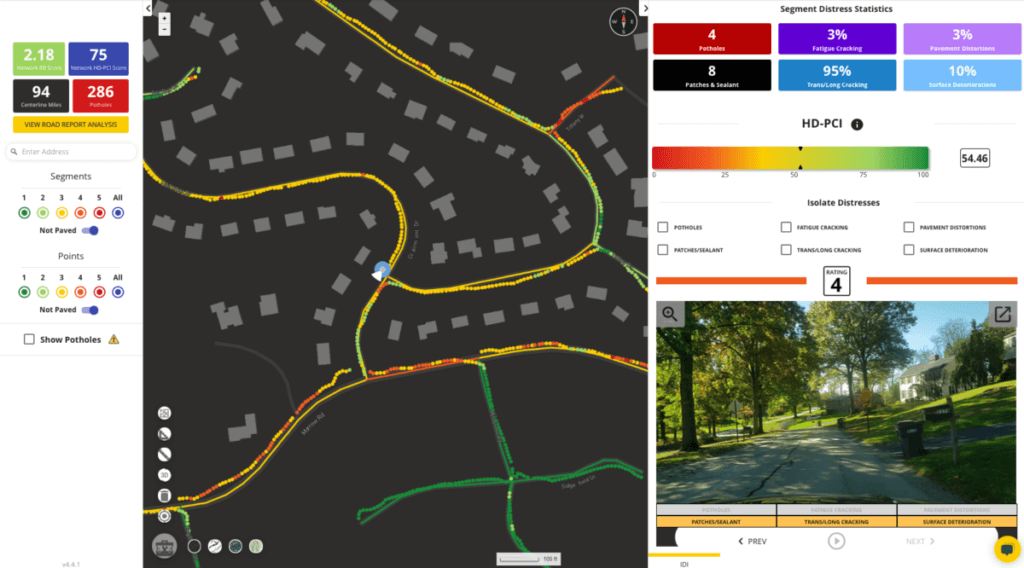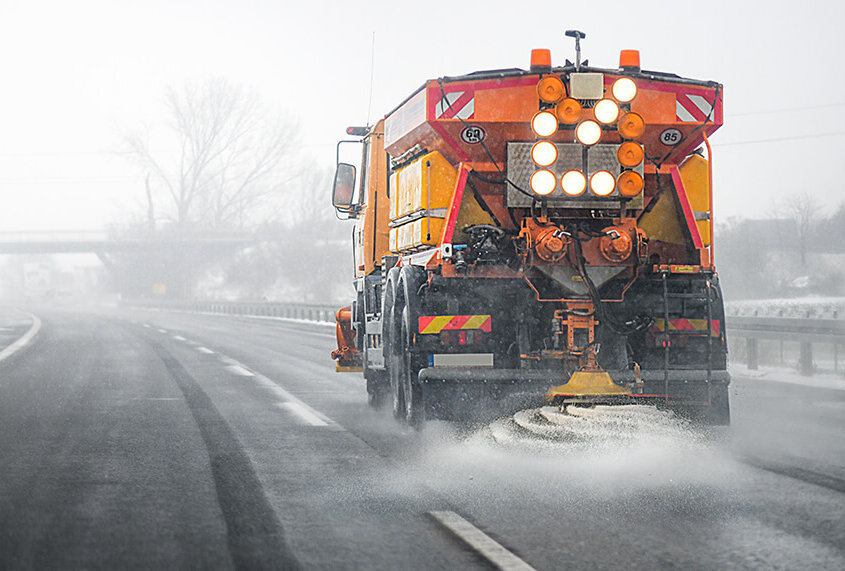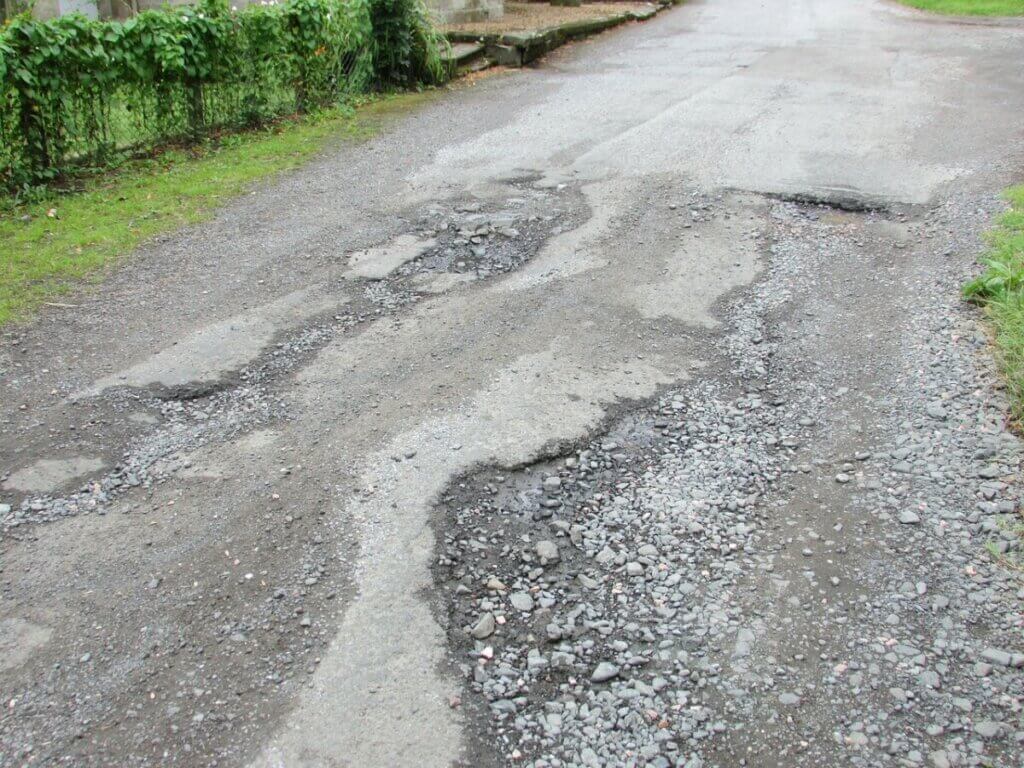Every year, United for Infrastructure spends a week championing America’s infrastructure by creating dialogue and conversation with cross disciplinary leaders in the infrastructure space – all with the goal of holding federal leaders accountable to #LeadWithInfrastructure and make the investments and policies needed to move the country forward.
Smart infrastructure investment means adopting tools and technology to meet today’s myriad of challenges and to prepare for the future.
Infrastructure is the platform for the entire economy. According to the American Society of Civil Engineers’ (ASCE) Failure to Act report, each $1 invested into infrastructure generates $3.70 in economic growth.
Now is the time for all levels of government to make strategic investments in the people, processes, and technology that will move the needle and ensure that Americans have equal access to safe, reliable, and resilient infrastructure systems.
How does RoadBotics help communities #LeadWithInfrastructure? With RoadWay, they help provide the tools that governments, civil engineering firms, and construction companies need to make data-driven infrastructure asset decisions.
Mapping Assets for Better Infrastructure Management
Recently, ASCE reported harrowing realities about America’s infrastructure: it is in poor condition and repeat underinvestment has resulted in significant funding gaps.
In ASCE’s 2021 Infrastructure Report Card, the nation’s infrastructure received a barely-passing ‘C-’ lettergrade. And in their Failure to Act report, they predict that by 2029, continued underinvestment will result in a funding gap of almost $2.6 trillion for essential infrastructure such as surface transportation, connected water systems, schools, and electricity.
Undoubtedly, a commitment to infrastructure investment is needed at the federal level with a focus on maintaining existing assets, not just building new, but the onus is on state and local governments to maintain, repair, and manage infrastructure and its adjacent assets.

The proper maintenance and upkeep of roads and bridges are imperative to communities because these infrastructure assets keep us connected. But repairs and maintenance do not stop at pavement surfaces or structural support. Inventorying and inspecting the adjacent signs, guardrails, and traffic lights is essential for driving, biking, and walking to be safe and efficient.
Not all communities have sidewalks, but for those that do, they are pivotal to the transportation and mobility spaces. In 1990, the American with Disabilities Act established a set of standards to ensure that sidewalks and other assets are accessible to all members of the community. Sidewalk networks must adhere to regulations, but proper management also involves routine monitoring of adjacent assets such as tree pits, park benches, and signage to ensure safety and prevent obstructions.
An investment in infrastructure will result in construction projects, outdated assets repairs and new building projects. As a project manager or construction foreman, managing multiple projects in different locations can be difficult without timely information and effective communication. With a mapping and communication tool like AgileMapper, users can track the progress of their teams and troubleshoot issues as they arise.
Assessing Roads for Better Maintenance and Rehabilitation

The infrastructure discussion is often centered around roads. Why is that?
Because America’s road network is vast, repairs are resource intensive, and roads have been historically underfunded. ASCE also reports that the current funding for surface transportation is $1.6 trillion and without adequate investment, the funding gap will grow to $1.2 trillion by 2029. Additionally, the budgetary capacity for road maintenance varies widely between levels of governmental responsibility. Small towns often manage road networks that far exceed their capacity.
Roads are also vital to safely moving people and goods from coast to coast, and it is estimated that a household spends nearly $600 per year on vehicle expenses related to poor quality roads.
In order for roads to be managed properly, the current condition of the pavement needs to be understood before developing short-term and long-term rehabilitation and repair plans. The traditional pavement assessment method is as outdated as the network itself. Manual inspections involve field crews driving the road network, identifying surface distresses, and making notes about the overall condition. This process is time consuming, subjective, and dangerous.
RoadBotics automated pavement assessment is a modern solution to an outdated problem. Pavement conditions are analyzed by the efficiency and accuracy of proprietary artificial intelligence, and the results are displayed on RoadWay, an easily interpretable, color-coded mapping platform for managing and assessing pavement condition data.

Because of RoadBotics unparalleled hyper granularity, it helps expand with technology what is humanly possible in the pavement management industry. With pavement condition ratings and road imagery given every ten feet, users can pin-point the precise location of repairs. The segment and network level data presents a holistic view of what needs to be addressed now and what should be prioritized for long-term pavement management plans.
RoadWay is a simple, cost effective, and objective tool that will help communities of all sizes move the needle on road conditions by making data-driven decisions.
Current economic constraints mean that smart and strategic investments are needed to move the needle on America’s infrastructure grade. From pavement condition assessments using RoadWay to asset mapping with AgileMapper, RoadBotics technologies are the starting point for making data-driven decisions and positioning communities to #LeadWithInfrastructure.







